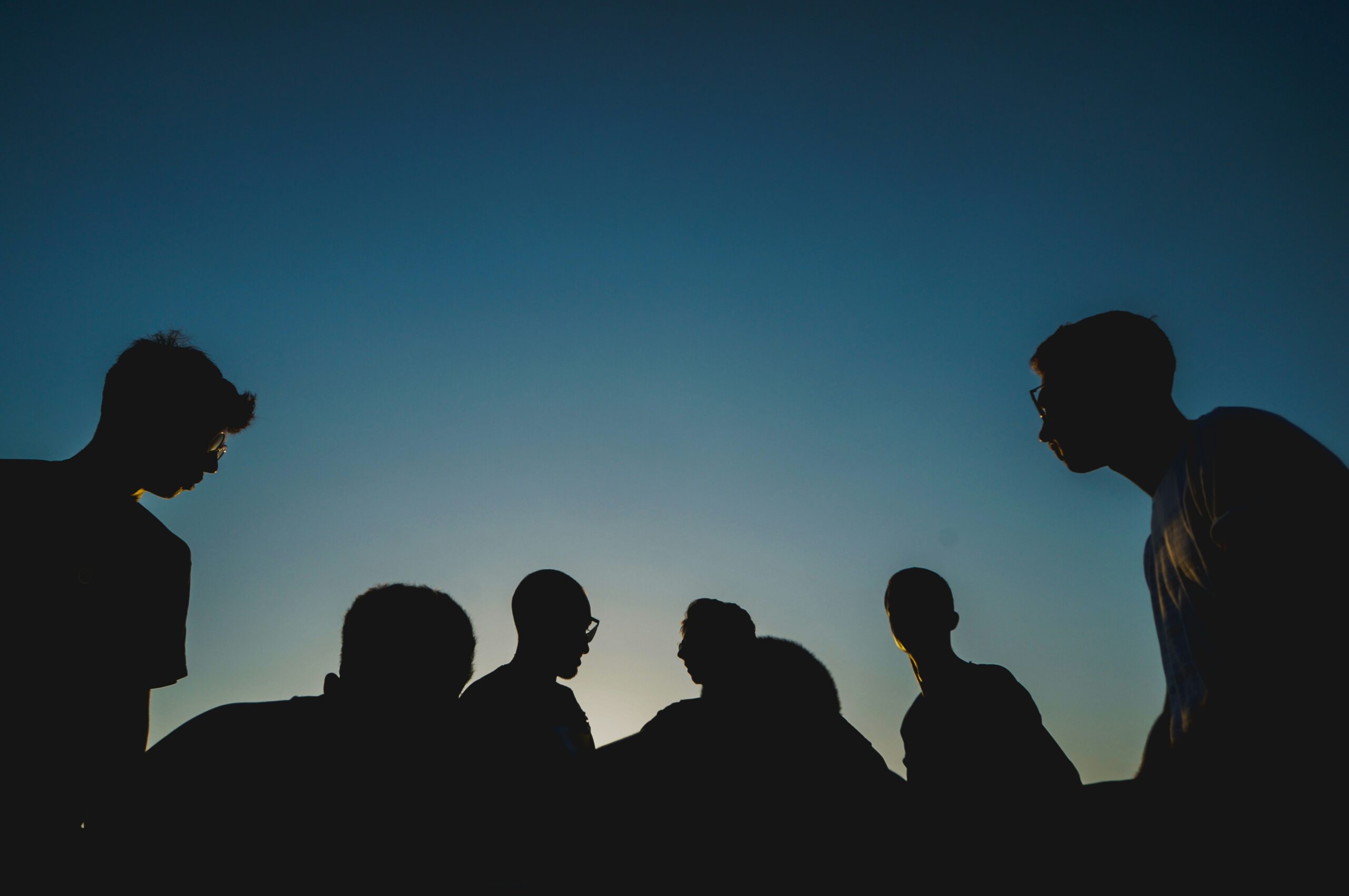I ran 5e with 8 to 10 players for two campaigns. The first campaign was an open table at our FLGS (Friendly Local Game Store). That campaign quickly grew from 3 players the first session to a peak of 12 players once (on which occasion we split into two separate tables with two DMs).
Given the shortage of DMs, you too may find yourself with lots of players. My key advice: In general, just embrace the chaos! Roll with the punches! All my plans went out the window fairly quickly for how I was going to manage the group. And what worked for smaller groups just doesn’t work with this many players. Here are some of the techniques I stumbled upon.
Recruit rules mentors – I couldn’t GM a group that size and also help with the rules (as I do in PbtA games). I encouraged a few other players to be tutors and mentors for the neophytes. I was fortunate to have a player who was the good kind of rules lawyer: he knew all the books in detail and was good at navigating them, while wanting to maximize fun rather than compliance. His encyclopedic knowledge was essential, because players ended up bringing in every book available at the time: the PHB, DMG, MM, Volo’s Guide to Monsters, Wayfinder’s Guide to Eberron, Xanathar’s Guide to Everything, as well as some bits of Unearthed Arcana. And, since those campaigns, now there are even more 5e books!
Peer support – I had to trust my players to know their character sheets. With a smaller group, I’d help with the character sheets and leveling up, but that was impracticable with this many people. Players helped each other out.
Streamlined initiative – We tweaked the initiative system and combat. The high roll won initiative, but then we’d move clockwise around the table from that player on, through the rest of combat. It just took too long to go through descending order of initiative roll. People never knew they were next.
Rolling damage with the attack roll – I lifted a tip from our store’s Adventurers League DMs, who taught players to roll damage with their attack roll. If the player missed, the damage roll was ignored, but if they hit it saved a step and a bit of time.
Voting with RPS – To wrap up discussions when we weren’t getting to consensus, I had the players use Rock Paper Scissors hand signals when there were two or three ideas or paths to pursue, arbitrarily assigning a sign to a choice. For instance, “make the rock symbol if you want to go back to Melvaunt, paper if you want to continue on the road, and scissors if you want to try the shortcut.”
Splitting the party – With a group this size “don’t split the party” is poor advice. I’d typically let them split up into self-selected groups: in one session, a group might seek out underworld contacts while another group sought clues at a temple, for instance.
Shifting the spotlight – Unlike PbtA games, 5e books don’t give great advice about moving the spotlight. Outside combat, I’d shift the focus whenever someone paused while trying to decide what they wanted to do, to create suspense, or just to get back to a player who hadn’t had anything to do for a bit.
Picking the hook – For session prep, I listened to what they were interested in. I had a number of fronts (a la Dungeon World) and also used Stars & Wishes to learn what they wanted. I did typically at the end of a session get a commitment for which one of the different hooks they were going to pursue next session: that made prep a lot easier. I also bought a ton of 5e Adventurers League modules set around Melvaunt and used those.
Conclusion
The first campaign became a runaway success, but it was getting hard to manage, even using all those tips above, so we decided to retreat from our FLGS for the second year’s campaign and meet at one player’s home. That shrank the maximum size of the group and meant everyone was more experienced, which definitely made the second year more manageable.
This was in 2019-2020, so COVID lockdowns forced the game online, where I quickly brought the campaign to a conclusion. While running a large group was manageable meeting around a table, it was tedious and boring and exhausting playing over Discord with that many players.
The big benefit of a group this size in person, though: you never have to cancel a session for lack of people!
Photo by Papaioannou Kostas on Unsplash.


